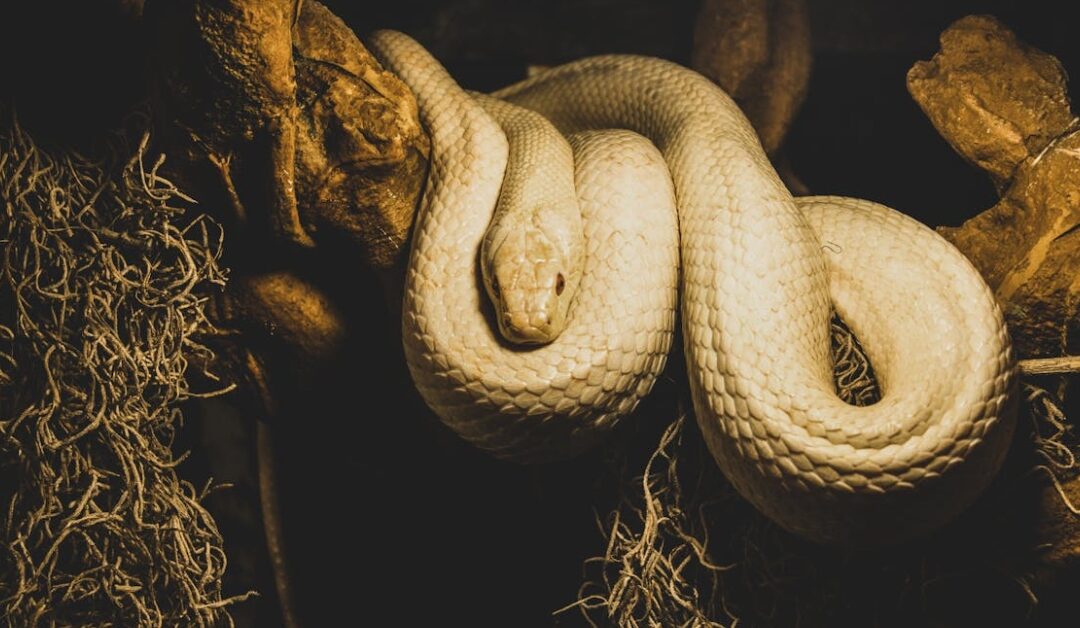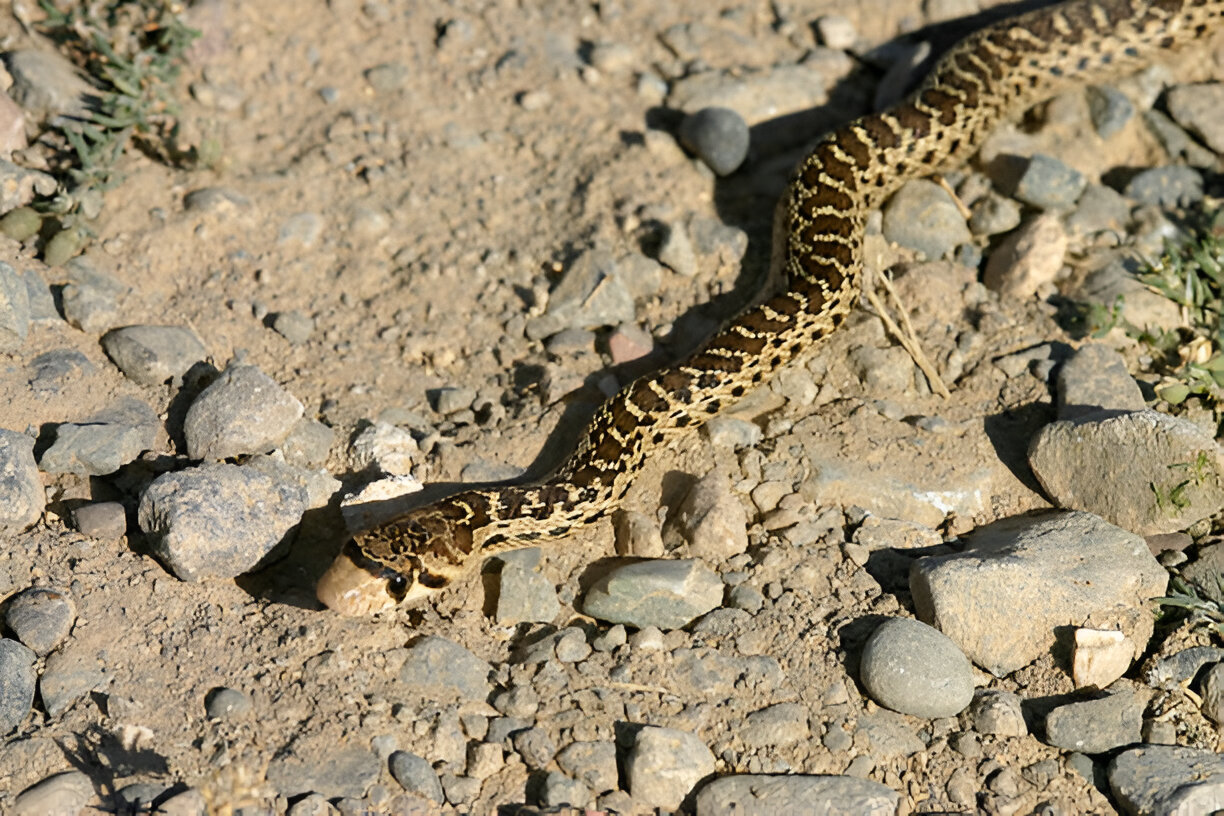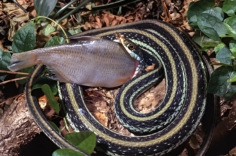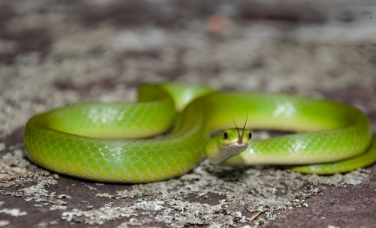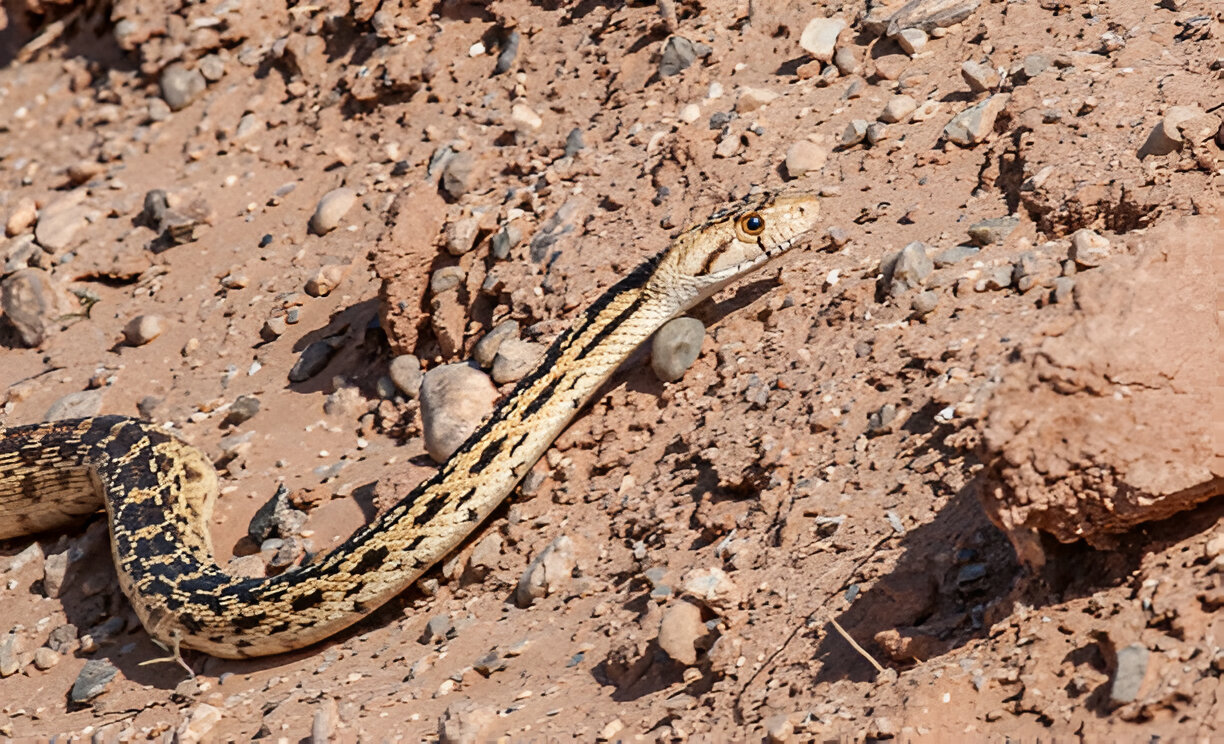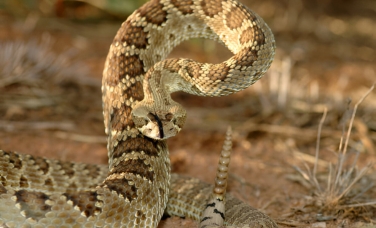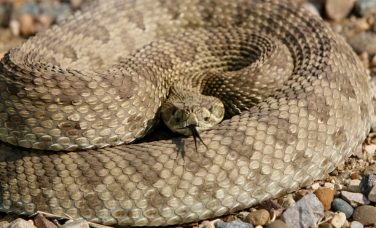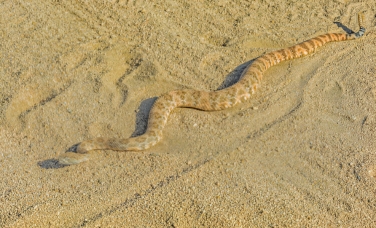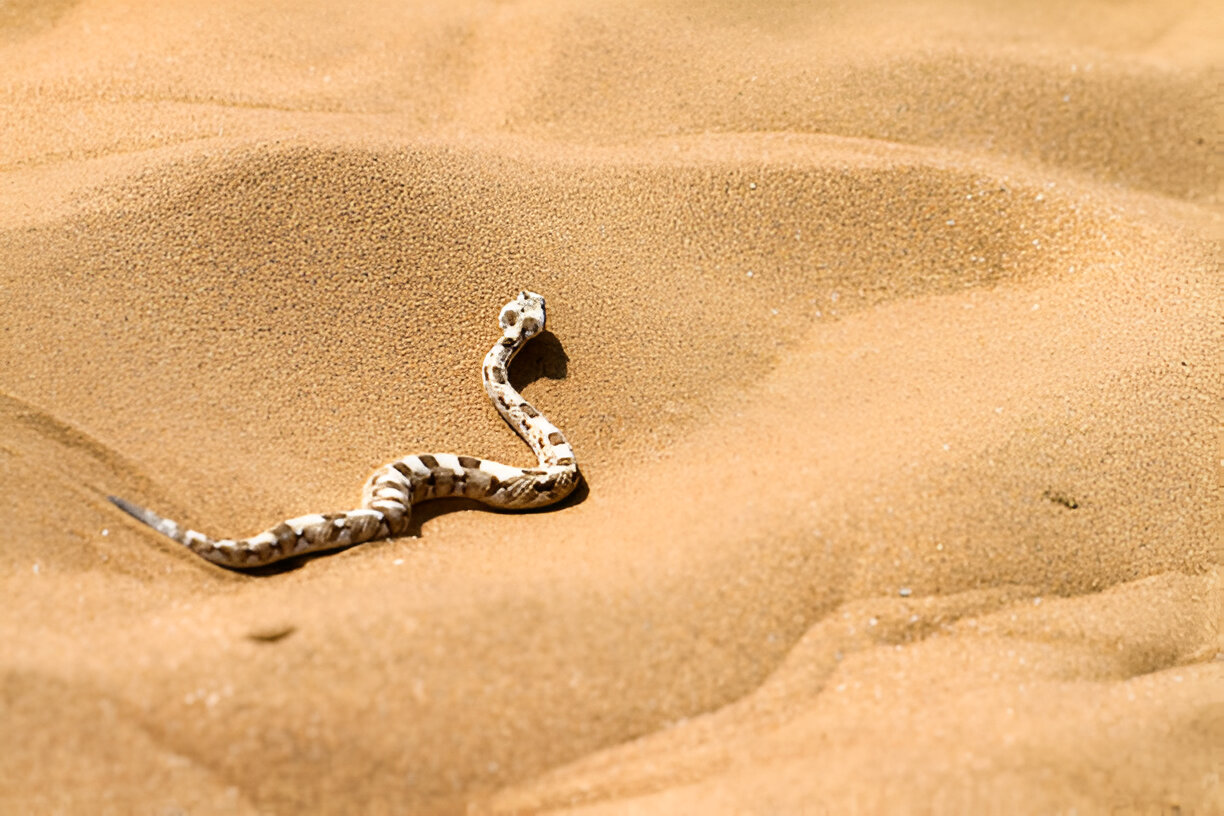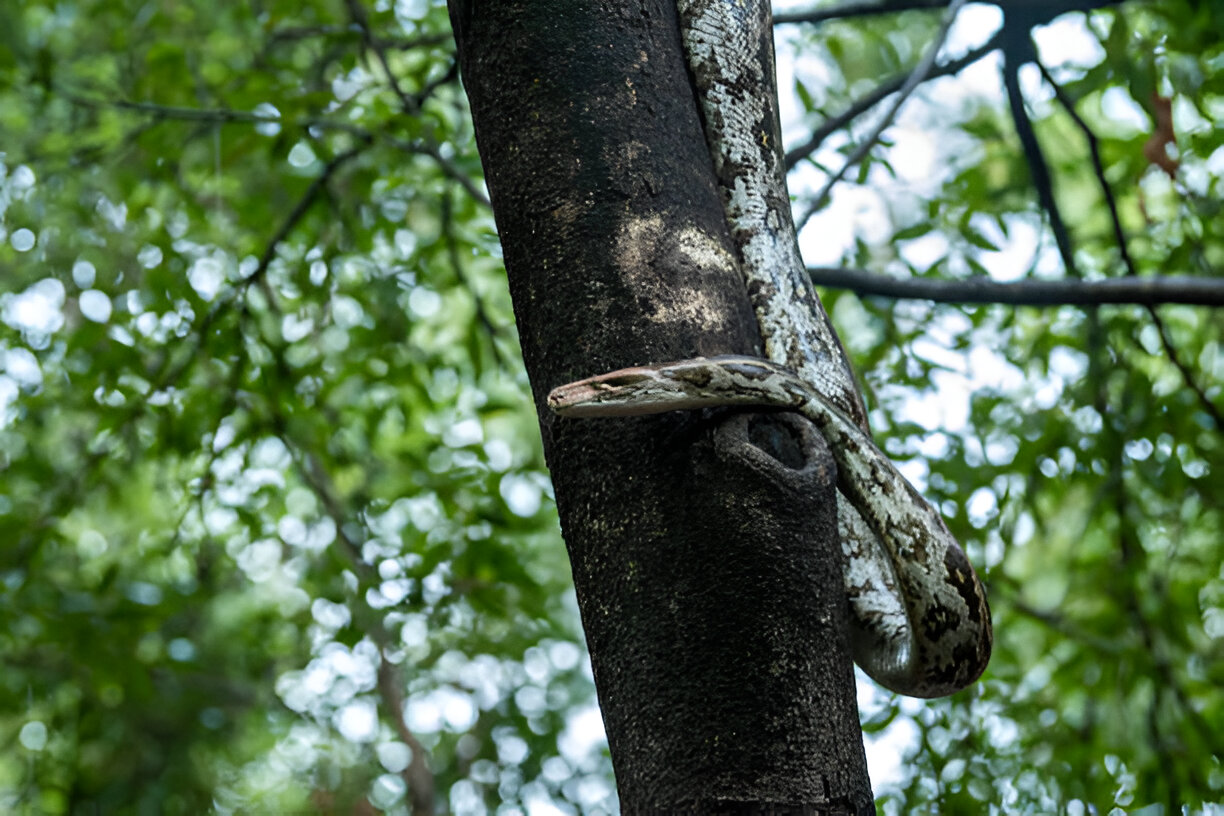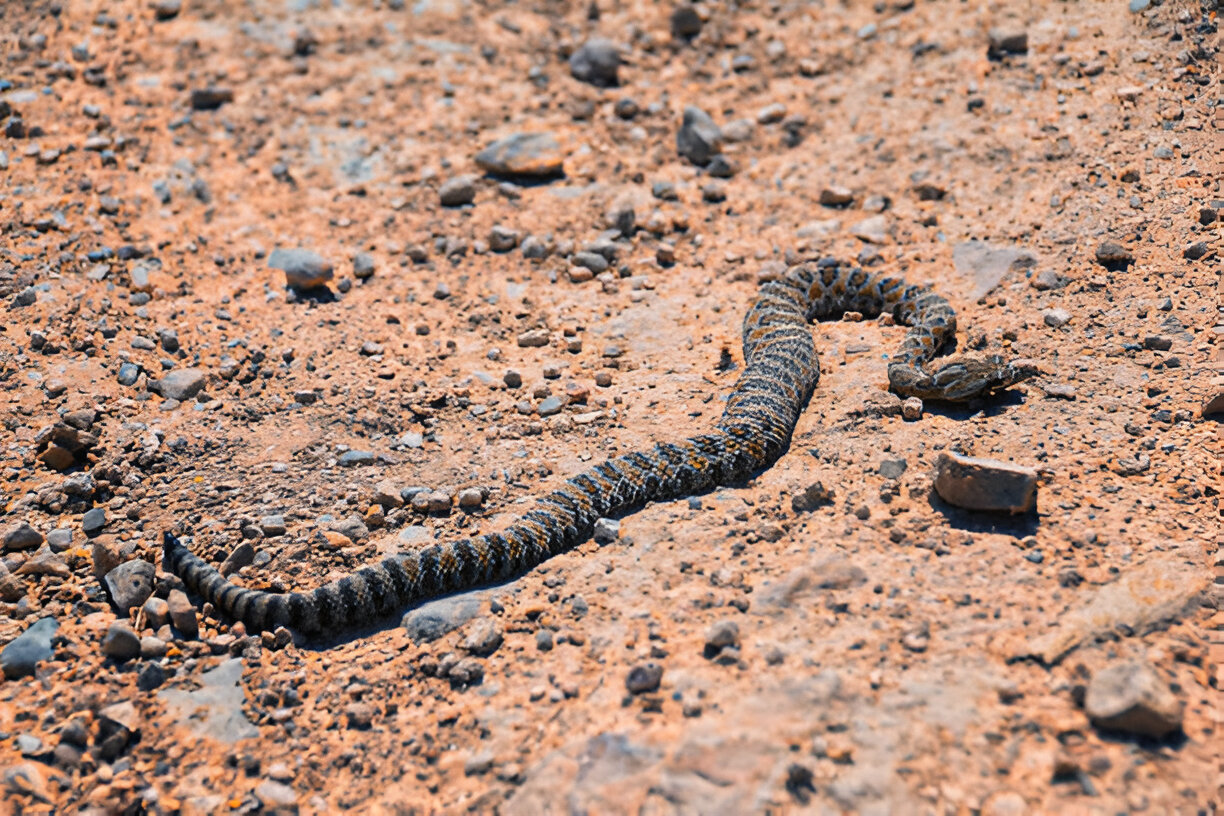Imagine you’re hiking a stunning trail in Utah, enjoying the breathtaking scenery, when suddenly, you spot a snake slithering across your path. For many, this can be a nerve-wracking experience. But with a little knowledge about snakes in Utah, these encounters can become awe-inspiring rather than alarming. In this comprehensive guide, we’ll explore the fascinating world of snakes in Utah and offer valuable safety tips to ensure you can coexist peacefully with these remarkable creatures.
Types of Snakes Found in Utah
Utah is home to a diverse range of snake species, each playing a vital role in the ecosystem. From non-venomous serpents to their venomous counterparts, let’s meet some of the most common snakes you might encounter.
Snakes in Utah: Non-Venomous Species
Snakes in Utah: Gopher Snake (Pituophis catenifer)
One of the most common non-venomous snakes in Utah, the Gopher Snake is often mistaken for a rattlesnake due to its similar appearance. However, it poses no threat to humans and is beneficial for controlling rodent populations.
Snakes in Utah: Common Garter Snake (Thamnophis sirtalis)
A familiar sight along streams and wetlands, the Common Garter Snake is easily recognizable by its long, slender body and distinctive stripes. These snakes are non-venomous and play a crucial role in managing insect populations.
Snakes in Utah: Western Terrestrial Garter Snake (Thamnophis elegans)
Similar to the Common Garter Snake, this species is found in various habitats across Utah. It’s known for its adaptability and is harmless to humans.
Snakes in Utah: Smooth Green Snake (Opheodrys vernalis)
With its vibrant green color, the Smooth Green Snake is a beautiful and harmless addition to Utah’s snake population. This species is typically found in grassy areas and meadows.
Snakes in Utah: Great Basin Gopher Snake (Pituophis catenifer deserticola)
An impressive constrictor, the Great Basin Gopher Snake is a subspecies of the Gopher Snake. It thrives in the arid regions of Utah and helps control small mammal populations.
Snakes in Utah: Venomous Species
Snakes in Utah: Great Basin Rattlesnake (Crotalus oreganus lutosus)
One of the most recognizable venomous snakes in Utah, the Great Basin Rattlesnake is known for its distinctive rattle and potent venom. If encountered, it’s essential to exercise caution and give this snake plenty of space.
Snakes in Utah: Mojave Rattlesnake (Crotalus scutulatus)
Considered one of the most dangerous rattlesnakes in North America, the Mojave Rattlesnake is known for its potent neurotoxic venom. This snake is typically found in the southwestern regions of Utah.
Snakes in Utah: Prairie Rattlesnake (Crotalus viridis)
Found in various habitats, including grasslands and rocky areas, the Prairie Rattlesnake is another venomous species to be aware of. Its distinctive rattling sound serves as a warning to potential threats.
Snakes in Utah: Sidewinder (Crotalus cerastes)
Named for its unique sideways movement, the Sidewinder is a fascinating venomous snake found in Utah’s desert regions. Its distinctive horns above the eyes add to its unique appearance.
Snakes in Utah: Speckled Rattlesnake
The Speckled Rattlesnake, a distinctive member of the snakes in Utah, inhabits the state’s rocky, arid regions. Known for its camouflage, this snake features a speckled pattern that blends with the desert landscape, ranging from gray to reddish hues. Its presence in Utah’s deserts highlights the state’s diverse reptile population.
Snakes in Utah: Their Habitats
Understanding the habitats where different snake species thrive can help avoid unexpected encounters.
General Description of Utah’s Diverse Landscapes
Utah is renowned for its diverse landscapes, ranging from arid deserts to lush forests and thriving wetlands. This diversity provides various habitats for the state’s snake population.
Snakes in Utah: Desert Areas
Snake Species Found
In Utah’s desert regions, you might encounter species like the Sidewinder and Glossy Snake. These snakes have adapted to survive the extreme temperatures and scarce water sources of their environment.
Adaptations to Desert Life
Desert-dwelling snakes often have specialized adaptations, such as sand-colored scales for camouflage and the ability to conserve water efficiently.
Snakes in Utah: Their Forested Habitats
Snake Species Found
Forested regions in Utah are home to species like the Great Basin Rattlesnake and Western Terrestrial Garter Snake. These snakes thrive in the cooler, shaded environments provided by the forest canopy.
Adaptations to Forest Habitats
Forest-dwelling snakes often have excellent climbing abilities and rely on dense vegetation for hunting and shelter.
Wetlands and Riparian Zones
Snake Species Found
Wetlands and riparian zones are ideal habitats for species like the Common Garter Snake and Nightsnake. These areas provide abundant food sources and ample hiding spots.
Adaptations to Wetland Environments
Snakes in wetland areas are often strong swimmers and have evolved to hunt aquatic prey.
Snakes in Utah: Safety Tips for Encounters
Encountering a snake in the wild can be thrilling, but it’s essential to stay safe and respect these creatures.
Precautions to Take While Hiking or Camping
When hiking or camping in snake-prone areas, wearing appropriate clothing and footwear is crucial. Long pants and sturdy boots can provide an additional layer of protection. Stay on designated trails to avoid disturbing snakes in their natural habitats.
How to Recognize and Avoid Snake Habitats
Identifying signs of snake presence, such as shed skins or tracks, can help avoid snake habitats. Steer clear of rocky outcrops, tall grass, and water edges, as these are common hiding spots for snakes.
Snakes in Utah: What to Do If You Encounter One
If you encounter a snake, it’s essential to stay calm and give it plenty of space. Back away slowly, without making sudden movements. Most snakes will retreat if they don’t feel threatened.
First Aid Tips for Snake Bites
In the rare event of a snake bite, knowing how to react can make a significant difference. Keep the affected limb immobilized and at or below heart level. Seek medical attention immediately, and avoid using tourniquets or attempting to suck out the venom.
Snakes in Utah: Their Ecological Importance
Snakes play a crucial role in maintaining ecological balance and supporting biodiversity.
Snakes in Utah: Role in the Ecosystem
Snakes are essential predators that help control populations of rodents, insects, and other small animals. Their presence contributes to a balanced food web and prevents the overpopulation of prey species.
Benefits of Having Snakes in the Local Environment
Snakes serve as natural pest control agents, reducing the need for chemical pesticides. Their presence also contributes to biodiversity, which is vital for a healthy ecosystem. Additionally, snakes can act as indicators of environmental health, signaling the well-being of their habitat.
Conservation Efforts and How to Support Them
Several conservation programs in Utah focus on protecting snake habitats and ensuring the survival of these vital species. Individuals can contribute by supporting local wildlife organizations, participating in conservation activities, and advocating for the protection of natural habitats.
Understanding and respecting Utah’s snake population is essential for preserving the delicate balance of the state’s ecosystems. By learning about the different snake species, their habitats, and safety measures, you can coexist peacefully with these remarkable creatures.
Remember, snakes are not to be feared, but respected for their crucial role in maintaining ecological balance. If you’re passionate about wildlife conservation, consider getting involved in local efforts to protect these fascinating reptiles. Together, we can ensure that future generations continue to marvel at the beauty and importance of snakes in Utah.
Explore more about Utah’s wildlife and get involved in conservation efforts today. Share your snake encounters and experiences with us, and let’s work together to protect these incredible creatures.
FAQ
Are snakes common in Utah?
Yes, snakes are quite common in Utah, particularly in the warmer months. The diverse habitats of Utah, ranging from deserts to forests, provide suitable environments for various snake species.
Is killing rattlesnakes illegal in Utah?
In Utah, it is illegal to kill rattlesnakes unless they pose an immediate threat to human life or livestock. The state protects these reptiles to maintain ecological balance, and violations can result in fines and penalties.
Are king snakes in Utah poisonous?
No, king snakes in Utah are not poisonous. In fact, they are beneficial as they prey on other snakes, including venomous species like rattlesnakes. King snakes are non-venomous and pose no threat to humans.
Are there any poisonous snakes in Salt Lake City?
While Salt Lake City itself is urbanized, the surrounding areas can be home to venomous snakes, such as the Great Basin Rattlesnake. It’s important for residents and visitors to be cautious and aware when venturing into natural habitats.
Which US states have the most snakes?
States like Texas, Arizona, and Florida have the most diverse populations of snakes due to their warm climates and varied ecosystems. Utah also has a significant number of snake species, especially in its desert and mountainous regions.
Where are snakes most active?
Snakes are most active in areas that provide ample food and shelter. In Utah, this includes rocky outcrops, grasslands, and near water sources. They are often seen sunning themselves on warm days and are more active during the morning and evening.
How many people have died from rattlesnake bites in Utah?
Fatalities from rattlesnake bites in Utah are extremely rare. While rattlesnake bites can be serious and require immediate medical attention, advancements in medical care and the availability of antivenom have significantly reduced mortality rates.
What to do if bit by a rattlesnake in Utah?
If bitten by a rattlesnake, seek immediate medical attention. Remain calm, keep the bitten limb immobilized and at or below heart level, and avoid any attempts to suck out the venom or use a tourniquet. Call emergency services or get to the nearest hospital as quickly as possible.
Are venomous snakes legal in Utah?
The legality of keeping venomous snakes as pets in Utah is regulated, and permits are typically required. It’s advised to check with local wildlife authorities to understand the specific regulations and requirements before attempting to keep a venomous snake.
What month are rattlesnakes most active in Utah?
Rattlesnakes are most active in Utah from late spring to early fall, particularly during the warmer months. They tend to be less active during the hottest part of the day, preferring the cooler hours of the morning and evening for hunting and movement.
Interesting Facts
Urban Encounters: Snakes in the City's Outskirts and Green Spaces
While Salt Lake City itself is urbanized, its proximity to natural habitats means residents and visitors might spot snakes in nearby parks, hiking trails, and even suburban areas. The Great Basin Rattlesnake is one of the species occasionally found on the outskirts of the city.
Diverse Habitats: From Wetlands to Forests Supporting Snake Life
The surrounding areas of Salt Lake City offer a range of habitats, from wetlands to forested regions, making it a suitable environment for various snake species. The Common Garter Snake and the Western Terrestrial Garter Snake thrive in these diverse landscapes.
Safety First: Essential Tips for Avoiding Snake Encounters
When venturing into natural areas around Salt Lake City, it’s crucial to wear appropriate clothing and footwear, such as long pants and sturdy boots. Staying on designated trails can help minimize unexpected encounters with snakes.
Snake Season: When and Where Snakes Are Most Active
Snakes are most active in the Salt Lake City region from late spring to early fall. During these warmer months, they can be seen basking in the sun or hunting for food, especially in the morning and evening when temperatures are cooler.
Community Awareness: Educational Programs on Coexisting with Snakes
Salt Lake City has programs and initiatives aimed at educating the public about safely coexisting with local wildlife, including snakes. These efforts help reduce fear and promote respect for these reptiles, which play a vital role in the ecosystem.
Venomous Neighbors: Identifying and Avoiding Dangerous Snakes
Although urban areas are less likely to house venomous snakes, the surrounding natural regions of Salt Lake City can be home to species like the Great Basin Rattlesnake. It’s important to be vigilant and give these snakes plenty of space if encountered.
Diverse Snake Species: From Common Garter Snakes to Rattlesnakes
The area around Lake Powell is home to a variety of snake species, including the non-venomous Common Garter Snake and the more elusive Great Basin Rattlesnake. These snakes thrive in the diverse habitats surrounding the lake, from rocky crevices to sandy shores.
Habitat Preferences: Snakes in Canyons and Shorelines
Snakes around Lake Powell often inhabit the rocky canyons and shoreline areas. The warm, sunlit rocks provide ideal basking spots for these reptiles, while the cooler, shaded areas offer protection during the hottest parts of the day. Visitors should be mindful of these habitats to avoid accidental encounters.
Snake Safety: Tips for Avoiding Unwanted Encounters
When exploring the picturesque landscapes of Lake Powell, it’s important to take precautions to avoid snake encounters. Wearing long pants and sturdy shoes, staying on marked trails, and avoiding tall grasses or rocky outcrops where snakes may hide can help ensure a safe and enjoyable visit.
Seasonal Activity: When Snakes are Most Active Around Lake Powell
Snakes in the Lake Powell region are most active from late spring through early fall, particularly in the early morning and late afternoon when temperatures are moderate. During these times, they can often be seen hunting for food or basking in the sun. Visitors should be extra cautious during these peak activity periods.

